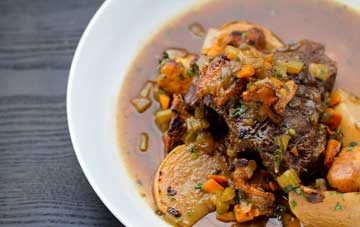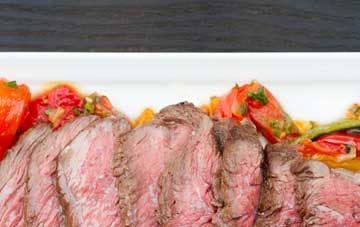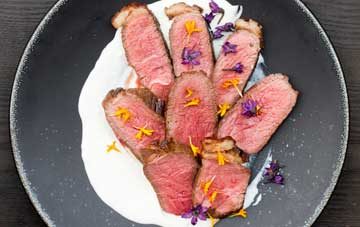
“Black Angus” is a cattle breed. There are several different breeds of cattle raised around the world. Some make better dairy cows, others make better beef cattle. Angus cattle are highly prized for beef production because they yield especially tender and flavorful meat due to a natural disposition to marbling.
Cattle breeds carry their fat in two ways: in a thick outer layer (not unlike ducks) or marbled (in tiny specks/strips) throughout their meat. Marbled beef is preferable to layered fat beef because marbled fat melts as it cooks, making the finished steak moist, flavorful, and tender.
Why aren’t all beef cattle Black Angus?
Black Angus cattle are originally from Scotland. They’re bred to flourish in that cooler climate and aren’t very tolerant of high temperatures. Because of this they are best raised in areas where temperatures stay lower, like New Zealand, rather than hotter climates like many classic US beef states.
In hotter areas it makes sense to raise different breeds. For example, Texas is known for its Longhorn breed cattle, which are much more heat tolerant, but carry their fat in layers more than as marbling.
What does “Certified Black Angus” mean?
Because of the genetic benefits discussed above, “Certified Black Angus” is a mark of quality. For Silver Fern beef, this means that the genetics of the cattle have been verified – all bulls siring the cattle are 100% Black Angus breed, and all cows bearing them are at least 50% genetically Black Angus breed.
Why is Silver Fern Black Angus Beef better?
Breed selection isn’t everything in determining the quality of beef. Though you may find Black Angus beef in your supermarket, it’s probably been grain-fed.
Grass-fed and finished beef from New Zealand is healthier beef raised on pastures year-round without hormones or sub-therapeutic antibiotics. It offers a clean yet intensely beefy flavor, less saturated fat, more nutrients, and shrinks less when cooked. Pasture raising beef is also substantially better for the environment.


